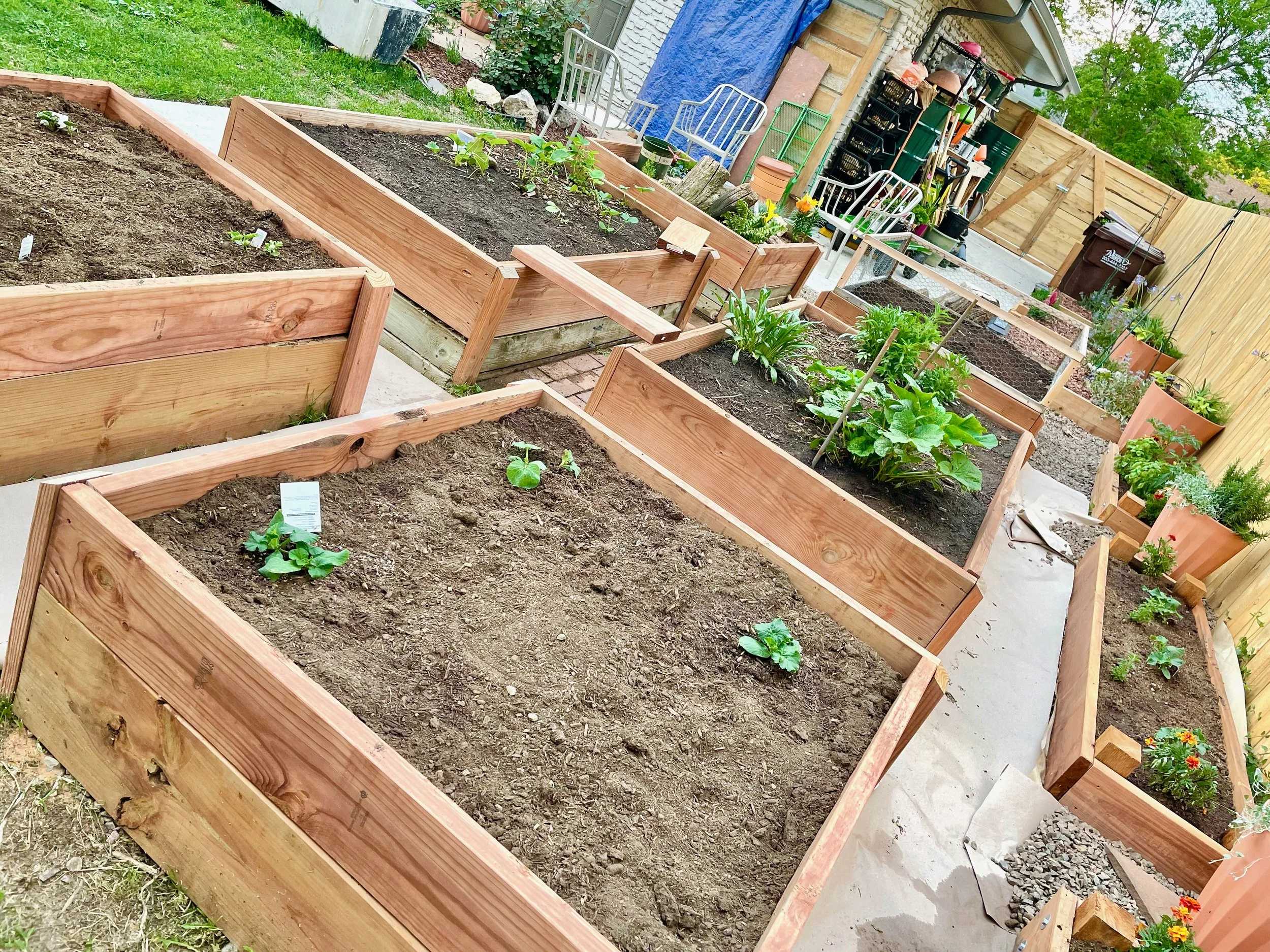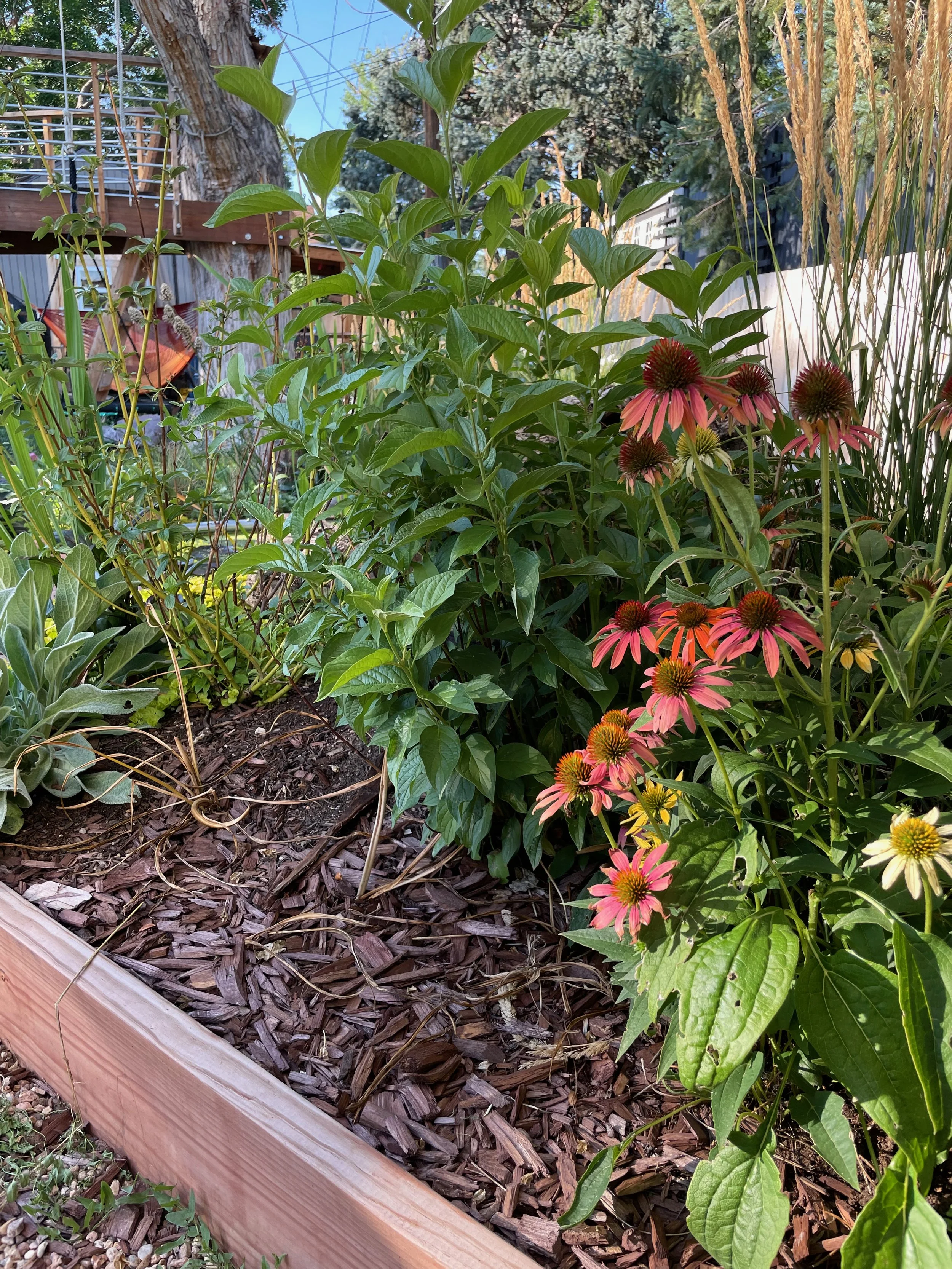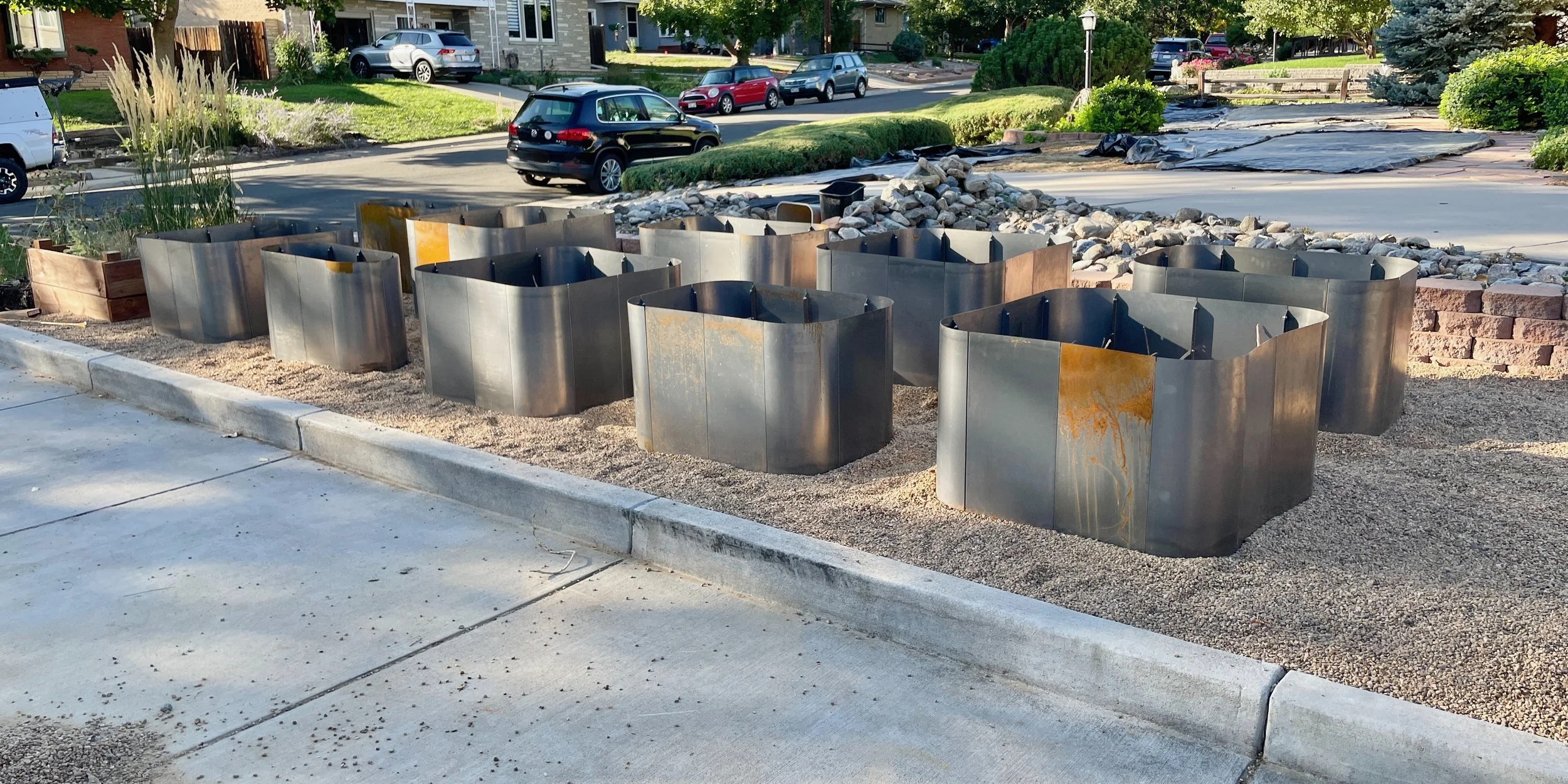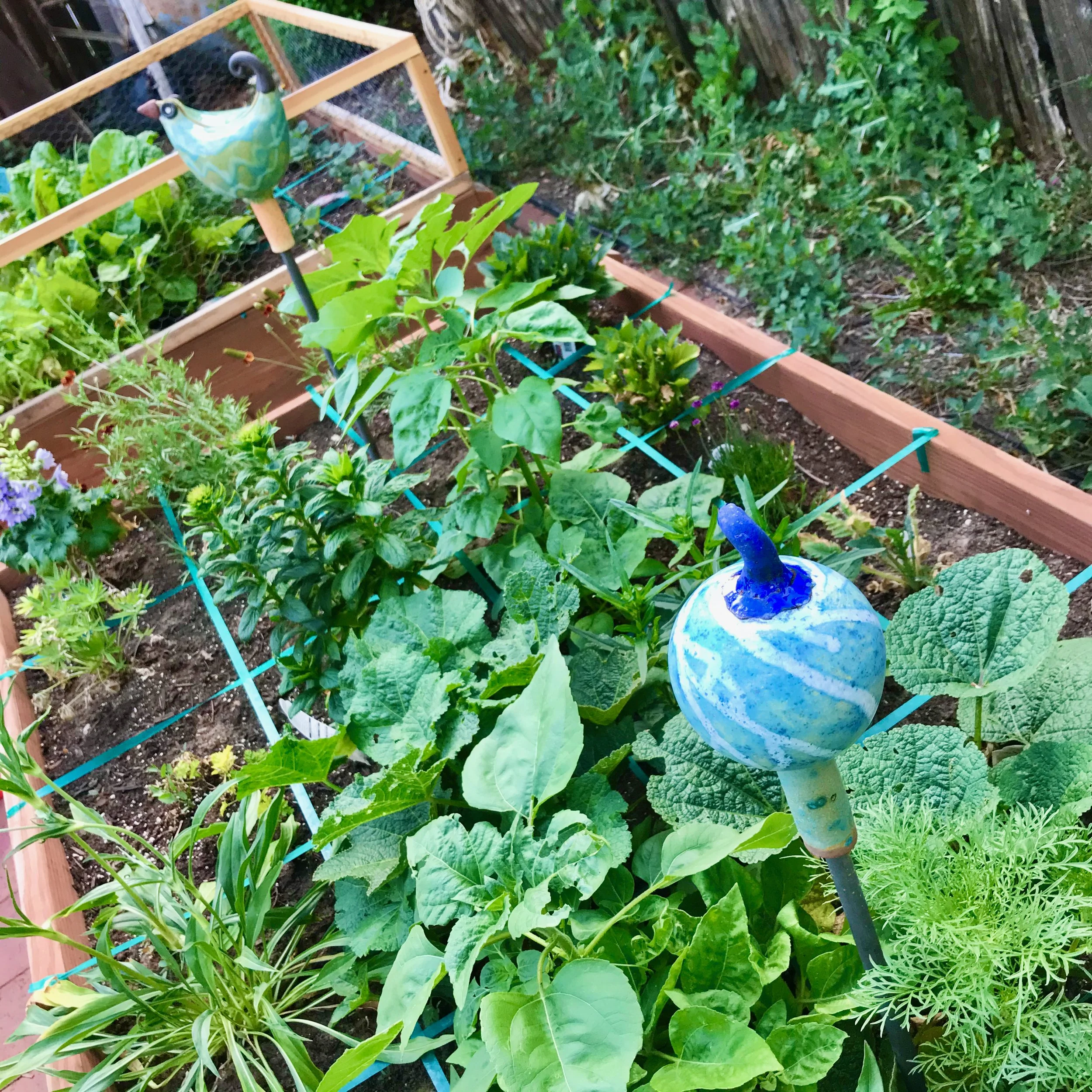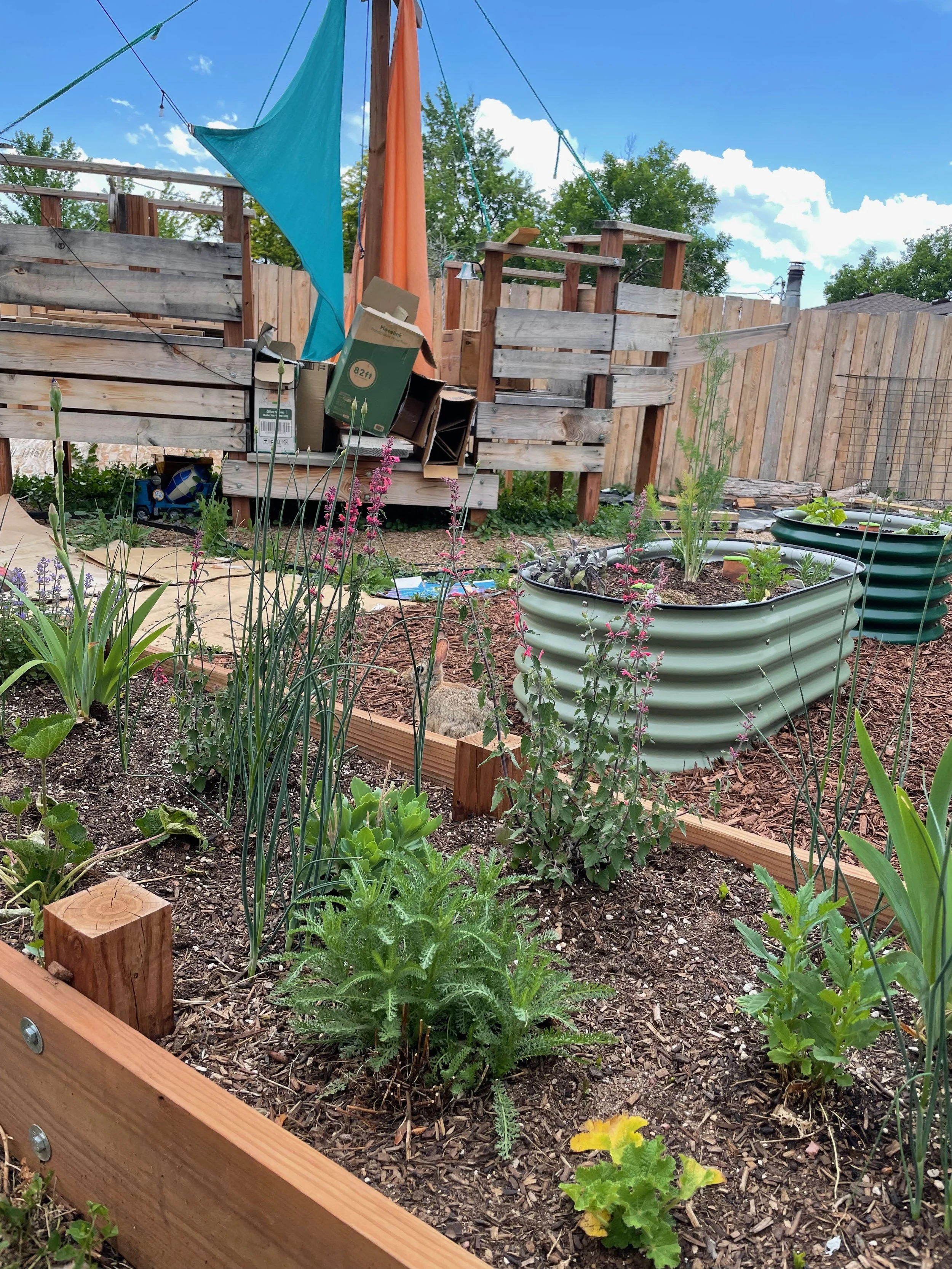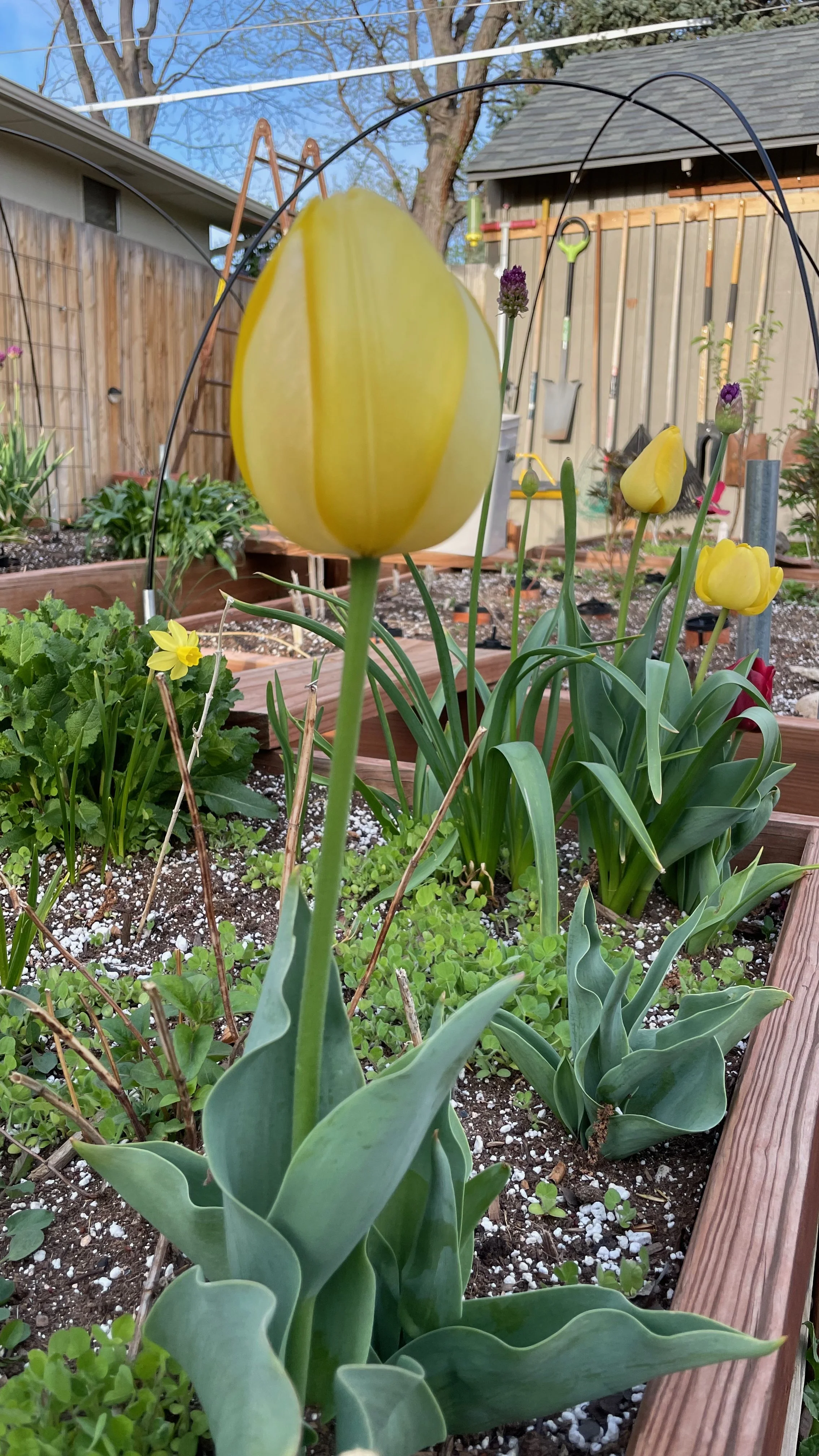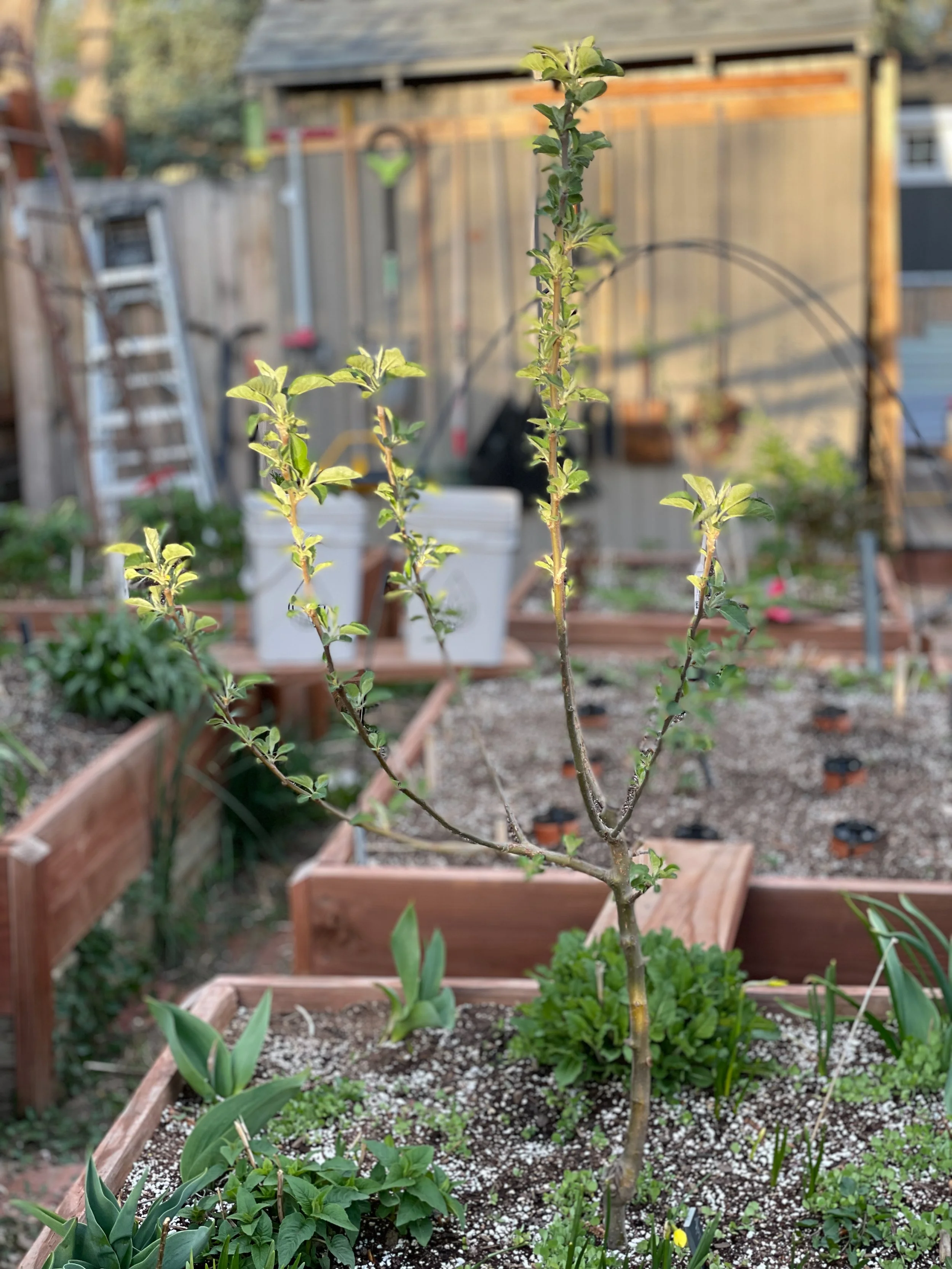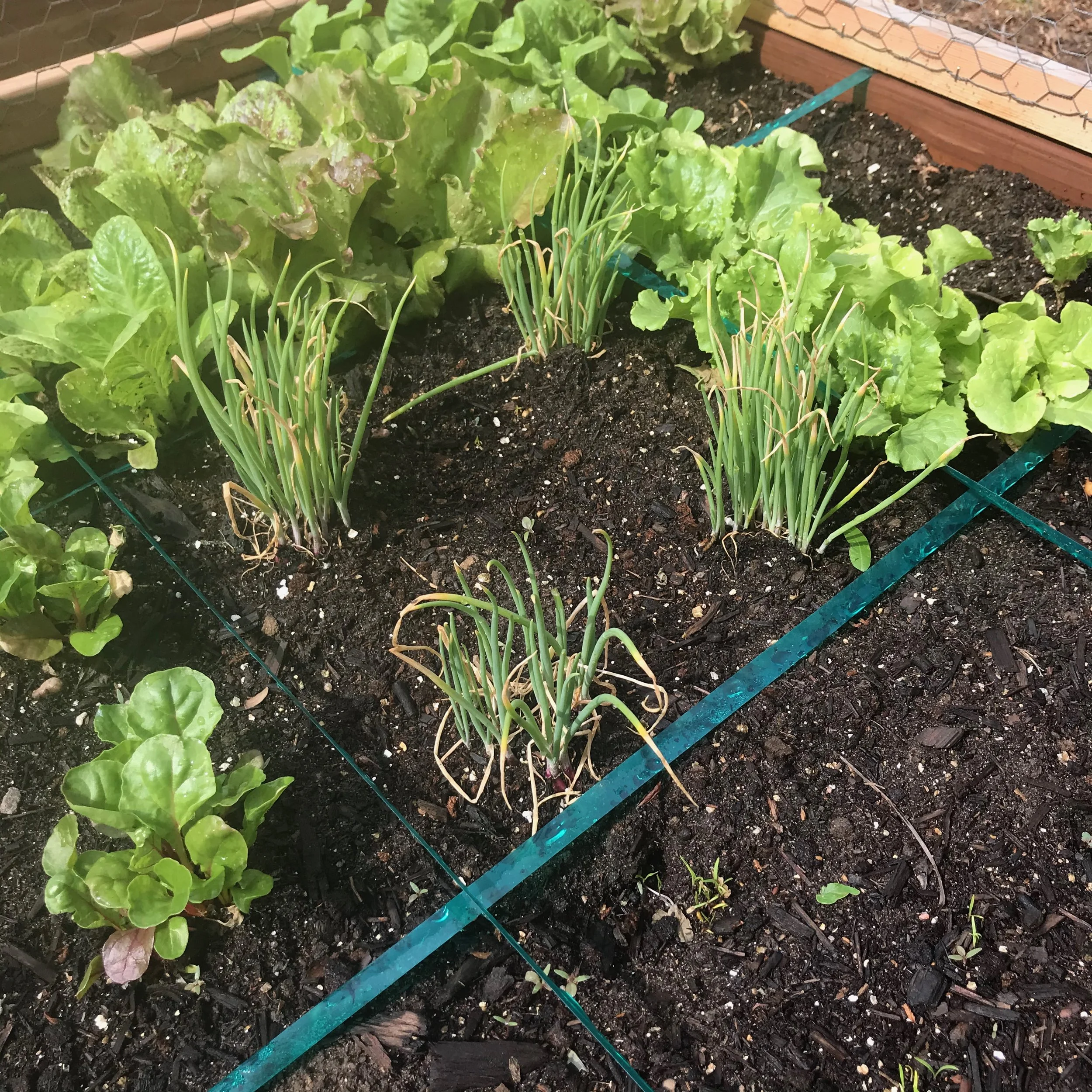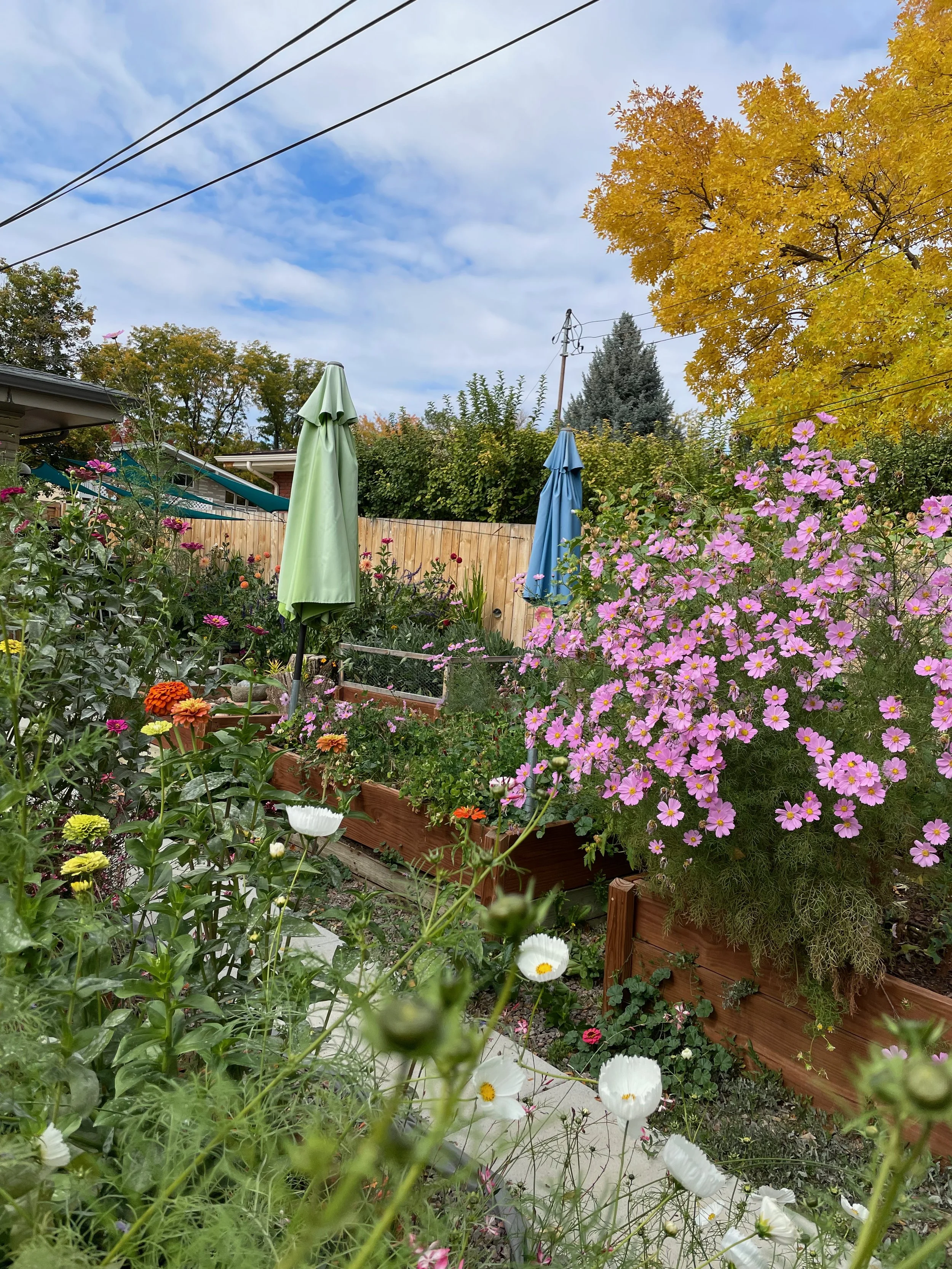Why Garden with Raised Beds?
I garden almost exclusively in raised garden beds. Years ago, I had a soil test done here that showed our soil was a mess. Combined with conversations I had with neighbors about what previous homeowners had done here – including years of neglect and burying a HUGE sand-filled play area, we decided that raised beds were the key to long-term gardening at this house.
I have used multiple types of raised beds and have grown everything from dahlias to radishes, roses to apple trees in raised beds since we started. And I am a huge advocate for raised bed gardening now. Raised beds can solve a lot of problems for gardeners – particularly if you are trying to grow vegetables and non-native plants. Plus, they can give height and structure to a flat garden in a matter of just a few hours, too!
Most of our raised beds are an example of my husband, Romano’s, practical design skills at work in our yard. They are built from standard lengths of lumber with few cuts and very little waste.
We live on what used to be short grass prairie, home to bison and pronghorn, prairie dogs, wolves, grizzly bears, ferrets, lizards, owls, hawks, turtles, and snakes. Over time the land was converted to ranch and farm land and then developed into a typical 1950s subdivision.
We take our stewardship of this little piece of land very seriously, and part of that stewardship is understanding the history. We are working to repair generations of neglect by gardening organically, removing the turf, welcoming biodiversity, and planting for a more sustainable, diverse, and environmentally-responsible future. Yes, I love my non-native species, but I am working to balance them with native prairie plants, too.
It is a small gesture, but I see gardening as a step toward restitution. Better care of our land. Healing.
So one of the things we have done over the last few years, is to add LOTS of raised beds in our backyard using these same principles — creating beds made from lumber with simple cuts and dimensions that are standard and eliminate waste.
Why do you use raised beds in your garden?
We live in Colorado, and the soil on this little plot of land is not great. The topsoil is only a few inches deep and sits on heavy clay below — great for a prairie, not so great for other plants.
So the raised beds are filled with a mixture of top soil, compost, and well-rotted manure. The compost and manure help it to hold on to moisture (critical here in the high desert) and nourish the plants. I practice no-dig gardening in these beds — simply adding fresh compost each year, but not mixing or turning the beds and rotating vegetable crops year to year
While many plants may end up rooting down into the ground below the beds, they have several inches of lovely, rich soil before getting into our native soils. The beds don’t have a bottom, so water can flow through and into the ground, and microbes, worms, and fungi can move freely to inhabit the new soil, too.
A Raised Bed Tour
Take a peek into my raised garden beds and see how they work in my garden. I use them for flowers as well as vegetables and even my orchard, and they have transformed our yard in beautiful ways!
Why Raised Garden Beds Are Great for Beginners
Raised garden beds elevate your plants above the ground, which makes gardening easier and more efficient. This means fewer challenges with soil conditions, drainage issues, and pest management. Raised beds can also be more forgiving for those with limited gardening experience.
Better Soil Control: Raised beds allow you to create the perfect soil mix for your plants. You don’t have to worry about compacted or poor soil.
Less Weeding: The elevation and controlled space can mean fewer weeds compete with your plants.
Accessible Gardening: Raised beds reduce strain on your back, making gardening more accessible for those with mobility challenges. Raised beds can be constructed at almost any height, and I have some that allow me to sit and garden which is so nice!
Improved Drainage: Raised beds provide superior drainage, preventing the soil from becoming waterlogged during heavy rains.
Types of Raised Garden Beds
I have gardened in all kinds of raised beds and containers! And I have created guides for several types so you can make the best choice for your garden and your budget. And remember: just because you make a choice now doesn't mean you can't change it in another season down the road!
Click the link below for more details on each of the types of raised garden beds in my garden.
Choosing the Right Location for a Raised Bed
Location is one of the most important factors in gardening success. Follow these tips to choose the perfect spot for your raised bed:
Sunlight: Most vegetables need 6-8 hours of sunlight per day. Choose a location with ample sun exposure.
Accessibility: Ensure the raised bed is easy to reach for watering and harvesting.
Proximity to Water: Raised beds require regular watering, so ensure there’s a water source nearby.
Avoid Shady Spots: Too much shade will stunt the growth of most plants, so avoid areas with heavy tree coverage unless you are aiming for a shade garden.
Essential Tools for Raised Bed Gardening
Here’s a list of must-have tools to make your raised bed gardening experience efficient and enjoyable:
Shovel or Spade: Use for digging, turning, and breaking up compacted soil.
Hand Trowel: Ideal for transplanting seedlings, planting small plants, and digging smaller holes.
Gloves: Protect your hands from thorns, dirt, and sharp objects in the soil.
Watering Can or Hose: Essential for watering your plants consistently. A watering can with a long spout allows precise control, while a hose with a gentle spray nozzle works for larger beds.
Rake: Smooth out soil in raised beds to ensure an even surface for planting.
Compost Bin: Composting your kitchen scraps and garden waste will enrich your soil with organic matter.
Techniques for Success
To make your raised garden bed as productive as possible, follow these proven gardening techniques:
Layering: Start with a layer of coarse materials (such as sticks or straw) at the bottom of your bed to improve drainage and reduce soil compaction. Read more about how to fill your raised beds here.
Soil Composition: A good soil mix is crucial for plant health. Aim for a blend of compost, garden soil, and other organic materials. Always choose a peat-free mix whether you are buying it bagged or making your own. You'll find my recipe for a peat-free mix for raised beds here.
Dense Planting: Rather than thinking about "companion plantings," I look for plants that grow well together and that can be planted closely together without out-competing each other. For instance, basil, tomatoes, marigolds, and peppers all enjoy the same growing conditions, and they don't compete with each other. So I plant tomatoes and peppers first and then fill in between them with basil and marigolds. The marigolds help to attract pollinators while the basil is delicious picked with the tomatoes. .
Mulching: Apply a 2-3 inch layer of mulch on top of the soil to retain moisture, suppress weeds, and regulate temperature.
My Tomato Bed
I used a tall Birdie’s Bed to set up my tomato bed, and I have never had such great tomato harvests! Take a peek into the entire set up in this video and get a good look at how my Birdie’s Beds look in the garden, too.
Watering & Maintenance
Watering is essential to keep your raised garden bed healthy. Raised beds tend to dry out faster than in-ground gardens, so pay attention to your plants’ water needs. The most efficient watering solutions deliver water at the soil level to keep plants truly hydrated. Options include:
Ollas: I use ollas in many of my raised beds. Read more about this efficient solution here.
Drip irrigation: drip lines can be a simple solution for many gardens. Choose drip kits that deliver water to the soil rather than spray kits to reduce evaporation and water waste.
Soaker Hoses: I also have soaker hoses set up on some of my raised beds. They are great for larger beds that are watered once or twice per week (or less). These are my favorites.
Hand Watering: Water early in the morning to minimize evaporation or in the evening on warm nights. I use a HoseLink hose reel which is a key tool in my garden keeping everything well-watered.
Regularly check your plants for signs of stress such as yellowing leaves, dry spots, or wilting. Ensure your soil is well-drained to avoid root rot. Regularly remove weeds to prevent competition for nutrients.
For more about watering your raised beds, check out this guide:
Starting a raised garden bed can be one of the most rewarding gardening experiences. I love my raised beds, and I'm so happy with them as a gardening solution. They make gardening in our yard so much easier! With the right location, tools, and techniques, you can create a thriving garden that provides fresh, home-grown vegetables, herbs, and flowers. Remember to choose the best soil, practice good watering habits, and use companion planting to maximize your yield.
Happy gardening!


